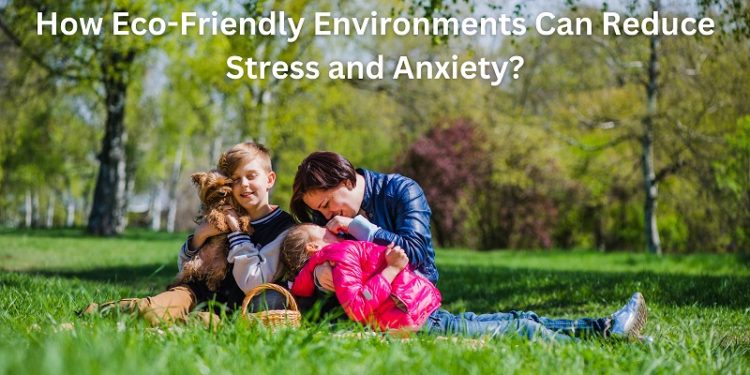Exposure to green spaces can lead to substantial reductions in stress and anxiety levels. For example, access to urban green areas has been linked to improved psychological health, offering a crucial escape from daily pressures. Integrating natural elements into our lives emerges as a vital strategy for fostering emotional resilience and overall well-being.
The Psychological Benefits of Nature Exposure
Time spent in nature significantly decreases stress levels, evidencing the powerful influence natural environments have on our mental well-being.
Healthcare professionals note that natural environments are especially beneficial for individuals recovering from substance use disorders. Patients undergoing alcohol detox have reported reduced anxiety and improved sleep quality when treatment facilities incorporate green spaces and natural elements. These findings highlight nature’s role in supporting various aspects of mental and physical recovery.
Salivary cortisol levels, along with blood pressure and heart rate, can be reduced by immersion in nature, while mood, emotional regulation, cognitive functioning, and creativity can be improved.
Green spaces in cities are especially advantageous for their mental health, providing residents with access to higher overall well-being scores, reduced levels of depression and anxiety, improved concentration and memory, and increased stress management capabilities.
Nature is an essential ingredient in maintaining good mental health owing to these advantages.
The Role of Eco-Friendly Design in Reducing Stress
Biophilic design revolutionized our perception of indoor environments; interaction with nature through architecture improves cognitive functioning and fosters creativity and productivity, reducing stress and anxiety, thus accounting for better job satisfaction.
Meanwhile, using sustainable building materials involves much more than just eco-friendliness; it significantly contributes to mental health.
These materials alleviate anxiety symptoms by reducing exposure to noxious chemicals, thereby improving indoor air quality, and hence creating a healthier environment in which to live and work.
Together, these design approaches foster spaces that support mental well-being.
Community Gardens and Social Connection
Community gardens help in the development of social networks and decrease the feeling of loneliness. These green spaces foster a sense of community, where strong community relationships reduce feelings of loneliness and create belonging and neighborhood ties.
Additionally, the benefits of gardening for one’s mental health come full circle therapeutically. Activities like gardening bring substantial benefits, including lower cortisol levels, increased mindfulness, a sense of purpose, and improved emotional regulation.
These would include best practices such as initiating small, doable projects; focusing on native plants; creating meditation areas; adding water features for relaxation; and designing spaces that will accommodate both solitude and social interaction.
Together, these practices can help facilitate the full mental and social benefits associated with green spaces.
Eco-therapy and Mindfulness Practices
Nature-Based Therapeutic Approaches
Meanwhile, eco-therapy in its various forms has become a powerful tool for maintaining mental health. The symptoms of anxiety are reduced; emotional resilience and self-awareness are developed.
This approach strengthens the connection between individuals and nature, improving inner balance and harmony. This can positively impact sleep quality due to increased physical activity outdoors and reduced overall stress from time spent in green environments.
Mindfulness in Natural Settings
Other activities, like forest bathing or Shinrin-yoku and other nature-based mindfulness practices, have indeed enjoyed quite remarkable benefits. These include reduced cortisol levels, lower blood pressure, improved immune function, and heightened clarity and focus of the mind.
Examples of nature-based mindfulness activities include guided nature walks, outdoor meditation sessions, wilderness therapy, nature journaling exercises, and environmental conservation projects. Mindful breathing exercises within natural landscapes can help heighten relaxation and contribute to states of calm.
Creating Your Own Eco-Friendly Sanctuary
To harness these benefits in your own space, consider:
Indoor Plants and Green Walls
- Choose air-purifying varieties: Opt for plants like spider plants, peace lilies, and snake plants to improve indoor air quality.
- Create vertical gardens: Use wall-mounted planters or hanging pots to maximize space and incorporate greenery indoors.
- Maintain proper plant care routines: Ensure adequate watering, sunlight, and pruning to keep your plants healthy and thriving.
Natural Light Optimization
- Remove obstacles to windows: Clear any furniture or objects blocking windows to maximize natural light flow into the room.
- Use mirrors to reflect light: Position mirrors strategically to bounce light around the space, making rooms feel brighter and more open.
- Install skylights where possible: Skylights can bring in additional sunlight, especially in areas with limited window space, enhancing natural lighting.
Sustainable Materials
- Choose non-toxic furnishings: Opt for furniture made from materials that are free from harmful chemicals, ensuring a healthier indoor environment.
- Use natural fiber textiles: Select fabrics like organic cotton, wool, or linen, which are better for both the environment and your home’s air quality.
- Select eco-friendly paint options: Use paints with low or zero VOC (Volatile Organic Compounds) to minimize indoor air pollution and create a safer living space.
Water Features
- Install small fountains: Introduce water features like small fountains to create a calming ambiance through the gentle sound of flowing water.
- Create rain gardens: Design areas that collect and filter rainwater, providing a natural habitat and reducing runoff while enhancing the space’s tranquility.
- Add aquatic elements: Incorporate ponds or water plants to promote relaxation and attract wildlife, enriching the natural beauty of the surroundings.
Conclusion
Green environments play a major role in calming your stress and anxiety. Natural elements promote calmness and well-being in our lives. This would involve community gardens that provide fresh produce, but also offer social contacts, while biophilic architecture serves to make our minds more transparent and emotionally stable.
Adding mindfulness practices in nature, such as forest bathing, to these environments further reinforces their mental health benefits. The creation of spaces that nurture our psychological health and at the same time respect the planet is important in the cultivation of a healthier life balance. It is in the pursuit of such eco-friendly strategies that we find the greatest potential for a better quality of life and closer contact with the world that surrounds us.
Frequently Asked Questions
1. How to manage stress effectively?
Manage stress effectively by practicing mindfulness, engaging in regular exercise, and maintaining a supportive social network.
2. Why is managing stress important?
Managing stress is vital because it helps prevent health issues and boosts overall well-being and productivity.
3. How to live with stress and anxiety?
To manage stress and anxiety, focus on mindfulness, regular exercise, and building a supportive social network.













































































